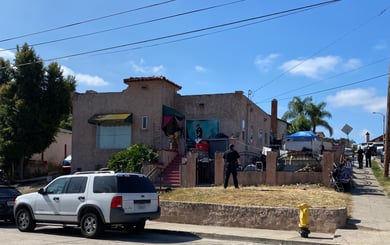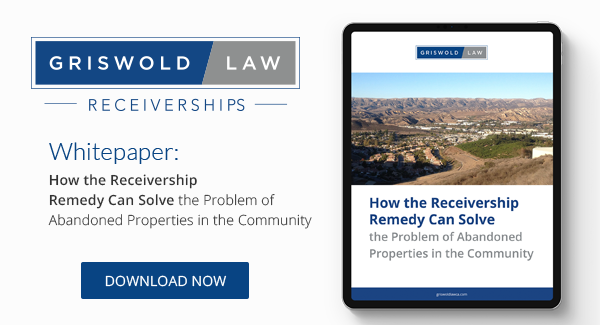 Do you have concerns about a property in your neighborhood that seems to be deteriorating? Are you a city official who is trying to address dangerous properties in your town? Or perhaps you are an attorney representing a community that is trying to take care of distressed properties.
Do you have concerns about a property in your neighborhood that seems to be deteriorating? Are you a city official who is trying to address dangerous properties in your town? Or perhaps you are an attorney representing a community that is trying to take care of distressed properties.
There are clear signs that a property may be considered “distressed,” and there are many stakeholders who are concerned about these properties.
If you are one of those concerned parties, this article will help you recognize the signs of a distressed property and how to address them.
What Is a Distressed Property?
The phrase “distressed property” typically refers to a building that is neglected, abandoned, or facing serious financial hardship. It may be at risk of being foreclosed upon by the bank or already under the control of a bank as an REO property.
Distressed properties are susceptible to neighborhood blight issues, code violations, and health and safety concerns. Additionally, they can cause property values to decrease.
Although you can’t always tell that a property is distressed just by looking, there are usually some pretty big red flags that will tell you that there is a problem. Let’s review these signs before we share an excellent tool that the State of California makes available to its communities.
Abandonment
One of the most obvious signs of distress is abandonment.
If an owner vacates their property, that usually means that they stop maintaining the property and cease paying bills for maintenance and repairs. Without anyone in the building, it can become susceptible to squatters.
Signs of abandonment include uncollected mail and packages, overgrown landscaping, utilities being shut off, unattended animals, and a general sense of disrepair.
Severe Disrepair or Dilapidation
A home or building doesn’t have to be abandoned to reach a state of disrepair.
When a property owner is struggling to pay for essentials, normal property upkeep becomes difficult. Major repairs are almost impossible. Because of this, distressed properties may become seriously damaged (and dangerous) even while people are still inhabiting the building. After abandonment, the deterioration becomes even more severe.
Roofs may start leaking, windows get broken, and structural damage occurs. If a property in your neighborhood looks severely run down, it may need intervention.
Health & Safety Code Violations
Properties that fail to comply with health and safety codes for issues like faulty wiring, blocked fire exits, failed plumbing systems or pest infestations are, from a legal perspective, distressed.
Even though the city may issue warnings and charge fines in hopes of resolution, multiple ongoing violations indicate the need for additional attention.
Criminal and Nuisance Activity
Properties frequented by gangs, squatters, and illicit drug users are likely to cause disruptions to the peace and safety of the surrounding community. Illegal activity and persistent nuisance activity are indicators of a distressed property.
Default on Loans & Missed Mortgage Payments
A property owner who cannot afford to remain current on a mortgage may vacate their property or allow it to fall into disrepair. Unpaid property taxes can also lead to a county tax sale. While tougher to identify from a physical condition perspective, financial stress can certainly lead to a property becoming distressed.
A Strategy for Distressed Properties: Court-Appointed Receiver
Dealing with a distressed property in your community can be frustrating. If you are an attorney representing any individual or group that is trying to resolve distressed properties, you should be aware of the court-appointed receivership remedy.
What is a receiver?
A court-appointed receiver is an individual, usually an attorney, who serves as a neutral third party and is appointed by a judge after a request is made by one or more parties.
Receivers have many responsibilities, but when it comes to distressed properties, they often:
- Address properties that pose a health and safety concern
- Assess properties for rehabilitation and oversee renovations and repairs, if possible
- Arrange for demolition if the property is condemned or otherwise unrepairable
- Potentially prepare the property for resale
In essence, a court-appointed receiver’s main responsibility is to carry out the orders of the court to safeguard the property and seek a resolution of the underlying factors that caused the distressed nature of the property.
Griswold Law – Distressed Property Receivers
Richardson “Red” Griswold has been appointed well over 180 times to serve as a receiver in the State of California. He and his team routinely resolve issues related to distressed properties.
We invite you to check out our track record of successful receiverships, including:
- Single-family homes
- Apartment complexes
- Motels
- Condominiums
- And more
Help is available for distressed properties in your neighborhood. Griswold Law has extensive experience in this role, taking control of distressed properties and rehabilitating them to improve California’s communities.
Download our whitepaper on the receivership remedy for abandoned properties to learn more.


